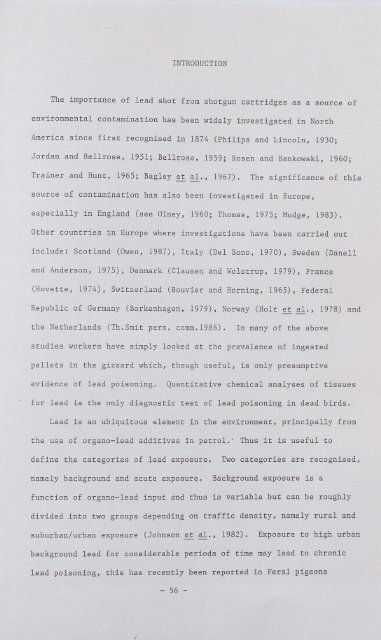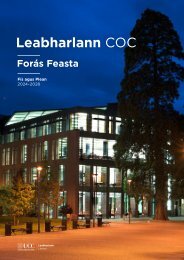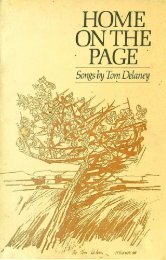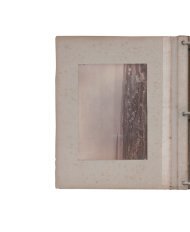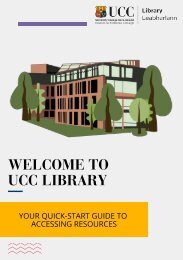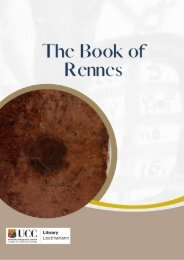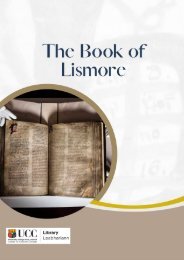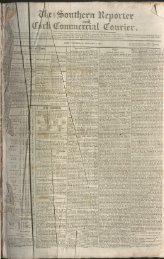Lead Toxicity in Mute Swans
LEAD TOXICITY IN MUTE SWANS Cygnus olor (Gmelin). By JOHN O'HALLORAN A thesis submitted to the National University of Ireland in candidature for the degree of Doctor of Philosophy September 1987
LEAD TOXICITY IN MUTE SWANS
Cygnus olor (Gmelin).
By
JOHN O'HALLORAN
A thesis submitted to the National University of Ireland
in candidature for the degree of Doctor of Philosophy
September 1987
Create successful ePaper yourself
Turn your PDF publications into a flip-book with our unique Google optimized e-Paper software.
I<br />
INTRODUCTION<br />
The importance of lead shot from shotgun cartridges as a source of<br />
environmental contam<strong>in</strong>ation has been widely <strong>in</strong>vestigated <strong>in</strong> North<br />
America s<strong>in</strong>ce first recognised <strong>in</strong> 1874 (Philips and L<strong>in</strong>coln, 1930;<br />
Jordan and Bellrose, 1951; Bellrose, 1959; Rosen and Bankowski, 1960;<br />
Tra<strong>in</strong>er and Hunt, 1965; Bagley et al., 1967).<br />
The significance of this<br />
source of contam<strong>in</strong>ation has also been <strong>in</strong>vestigated <strong>in</strong> Europe,<br />
especially <strong>in</strong> England (see Olney, 1960; Thomas, 1975; Mudge, 1983).<br />
Other countries <strong>in</strong> Europe where <strong>in</strong>vestigations have been carried out<br />
<strong>in</strong>clude: Scotland (Owen, 1987), Italy (Del Bono, 1970), Sweden (Danell<br />
and Anderson, 1975), Denmark (Clausen and Wolstrup, 1979), France<br />
(Hovette, 1974), Switzerland (Bouvier and Horn<strong>in</strong>g, 1965), Federal<br />
Republic of Germany (Borkenhagen, 1979), Norway (Holt et al., 1978) and<br />
the Netherlands (Th.Smit pers. cornm.1986).<br />
In many of the above<br />
studies workers have simply looked at the prevalence of <strong>in</strong>gested<br />
pellets <strong>in</strong> the gizzard which, though useful, is only presumptive<br />
evidence of lead poison<strong>in</strong>g.<br />
Quantitative chemical analyses of tissues<br />
for lead is the only diagnostic test of lead poison<strong>in</strong>g <strong>in</strong> dead birds.<br />
<strong>Lead</strong> is an ubiquitous element <strong>in</strong> the environment, pr<strong>in</strong>cipally from<br />
the use of organo-lead additives <strong>in</strong> petrol.· Thus it is useful to<br />
def<strong>in</strong>e the categories of lead exposure.<br />
namely background and acute exposure.<br />
Two categories are recognised,<br />
Background exposure is a<br />
function of organo-lead <strong>in</strong>put and thus is variable but can be roughly<br />
divided <strong>in</strong>to two groups depend<strong>in</strong>g on traffic density, namely rural and<br />
suburban/urban exposure (Johnson et al., 1982).<br />
Exposure to high urban<br />
background_ lead for considerable periods of time may lead to chronic<br />
lead poison<strong>in</strong>g, this has recently been reported <strong>in</strong> Feral pigeons<br />
- 56 -


